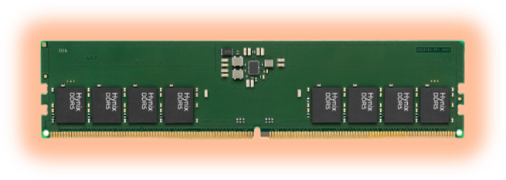The Consequences of Semiconductor Market Trends for Long-Life Applications
In today’s fast-evolving semiconductor landscape, older generations of memory components are increasingly phased out. A recent example is SK Hynix and Samsung retiring their DDR3 production this year, making room for DDR5. However, for industries that develop long-life applications—such as medical devices, defense systems, automotive electronics, networking, telecom, robotics, and home entertainment—these legacy components remain highly relevant. Given their proven reliability and stability, sticking with these mature-node technologies often makes more sense than redesigning a product for every new generation of memory technology. Here's a closer look at current market trends and their implications for managing long-life products.
Market Realignment and the Continued Relevance of Older Technologies
As the semiconductor market shifts towards supporting next-generation technologies, including AI, cloud computing, and autonomous systems, manufacturers are increasingly focusing on newer memory components such as DDR5 and UFS storage. However, long-life applications—where redesign cycles are costly, time-consuming, and subject to stringent regulatory approvals— are expected to continue to rely on mature DRAM and Flash technologies for some time.
For professionals in industries requiring long-term product stability, developing a proactive sourcing strategy for these older components is crucial. This might involve maintaining a sufficient inventory of critical components to avoid disruptions in supply or partnering with suppliers, like SMARTsemi, that specialize in legacy components to secure high-quality, tested stocks. Engaging in last-time buys (LTB) is another viable but costly approach, where companies coordinate with suppliers for bulk purchases of components reaching EOL. Furthermore, designing products with flexibility in mind can help accommodate multiple memory generations with minimal changes, thereby reducing future redesign efforts.
Navigating Market Consolidation and Component Availability
The aftermath of COVID and the wave of mergers and acquisitions in the semiconductor industry in the last four years is driving consolidation, which often results in a reduction of product lines focused on older technologies. As companies streamline their offerings to concentrate on more profitable, high-growth areas, the availability of, for example, DDR2, DDR3, DDR4, and eMMC 5.0 diminishes.
To address this challenge, engineers and procurement specialists should keep an eye on industry consolidation, and understanding which products may be phased out allows for strategic planning. Additionally, working with specialist distributors, suppliers like SMARTsemi, and services like the recently launched SOURCEplus that focuses on sourcing hard-to-find components can help maintain supply continuity, minimizing the impact of market shifts.
Mitigating the Impact of Supply Chain Disruptions
Supply chain disruptions due to global events like the COVID-19 pandemic, geopolitical conflicts, and material shortages have created challenges across the semiconductor industry. For older memory components, these disruptions can be particularly acute as manufacturers prioritize the allocation of limited resources to newer technologies with higher margins.
To mitigate these risks, diversifying the supplier base is essential. This approach reduces over-reliance on a single supplier and involves working with multiple vendors across different regions to help manage the risk of localized shortages or geopolitical tensions. Increasing supply chain transparency is another important strategy; investing in tools and platforms that provide real-time visibility into the supply chain can help identify potential disruptions early and allow quick adjustments. Additionally, companies should engage in comprehensive risk mitigation planning, which includes identifying backup suppliers, considering alternate components, and planning for potential design modifications to ensure continuity.
Adapting to Localized Production Trends
As countries and regions invest in domestic semiconductor manufacturing to reduce dependency on global supply chains, there is a growing emphasis on developing newer technologies. While this market shift is still unfolding, it is likely that the focus will reduce the priority given to older memory components, potentially limiting their availability or making them subject to trade regulations. According to reports, less than $1 of every $6 of private investment in the CHIPS and Science Act is for mature-node semiconductors.
Professionals in long-life application industries should carefully monitor regulatory changes to stay ahead of trade policies and regulations that could impact the cross-border flow of older components. This foresight can help adjust sourcing strategies in advance. Staying informed about technology roadmaps and announcements from component manufacturers regarding their production plans—especially those related to domestic production strategies—can provide valuable insights for future planning.
Strategic Implications for Long-Life Application Design
For industries dependent on long-life applications, shifting market dynamics present both challenges and opportunities. Older memory components, while being phased out in mainstream semiconductor production, remain critical for sectors where product longevity and reliability are paramount. It is vital to maintain compatibility with mature technologies to avoid forced redesigns due to component shortages. Regularly reassessing the trade-offs between adopting newer technologies and sticking with proven components can provide a clearer understanding of both the immediate and long-term costs, including availability, risk of obsolescence, and regulatory impacts. Additionally, maintaining transparent communication with stakeholders—both internal teams and customers—about the status of component availability and potential impacts on product lifecycles can help manage expectations and enable contingency planning.
While the semiconductor market trends towards newer technologies, long-life applications continue to rely on older-generation memory components. To navigate the evolving landscape, industry professionals must adopt strategic approaches to sourcing, supply chain management, and design flexibility. By staying informed and agile, and working with a trusted supplier, they can ensure the continued success of long-life applications in a rapidly changing environment.
SMARTsemi is your supply chain partner for DRAM components, eMMC solutions, and SD/microSD Flash Memory Cards for long-life applications. With 20+ years of industry experience, we understand your challenges and have aligned our priorities with yours to simplify your memory chip supply chain for the long run. We know what you need before you need it. Get a jump start and request a sample today.







